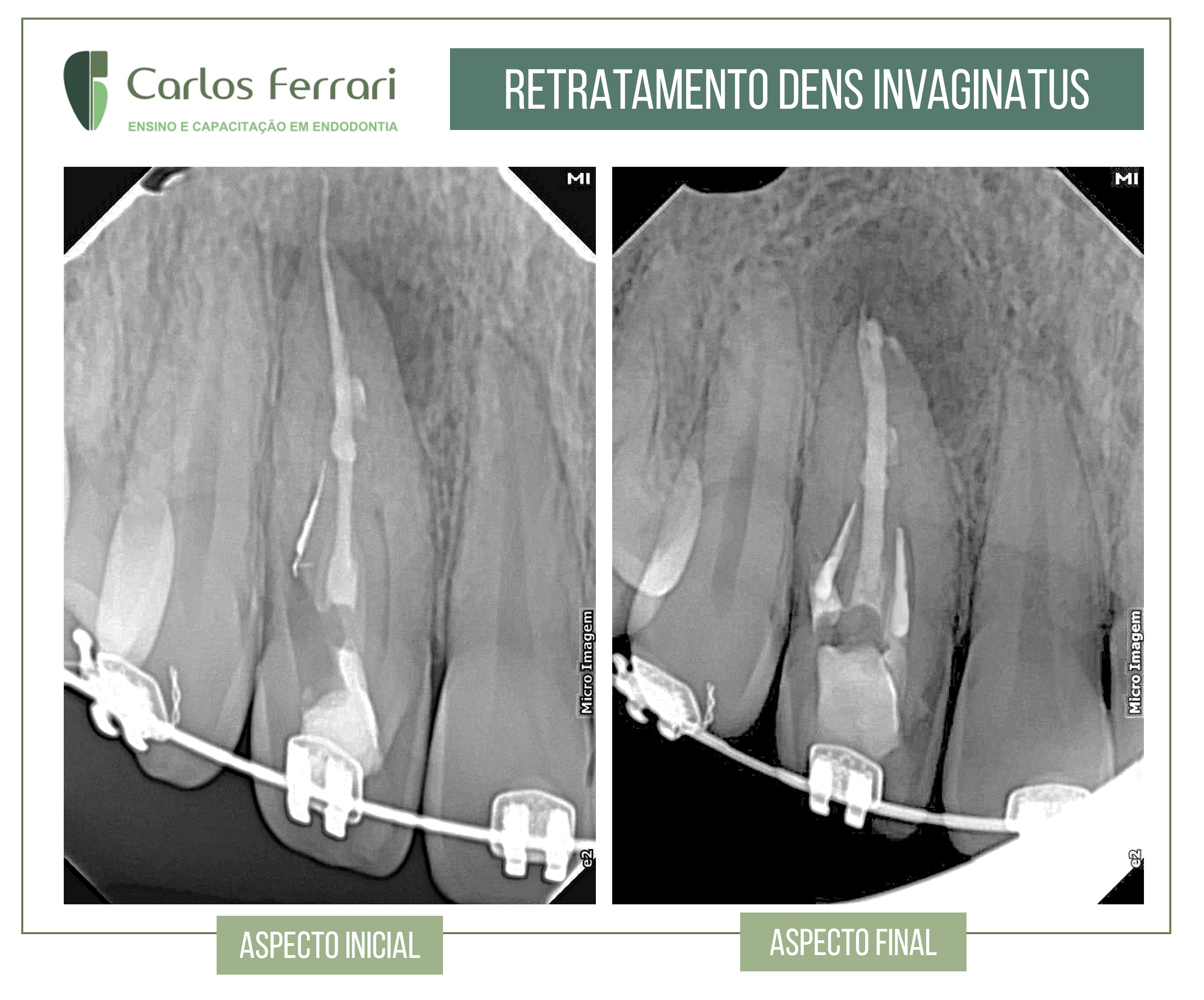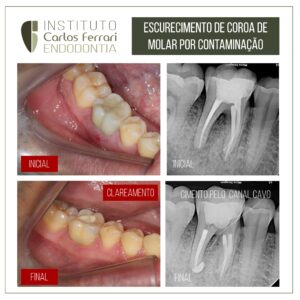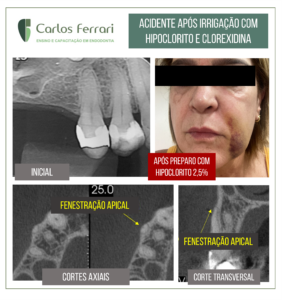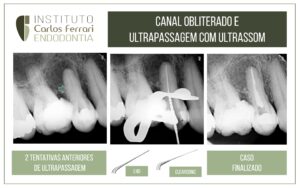Tratamento de dens invaginatus com MTA.
Paciente procurou a clínica queixando-se de dor à palpação na gengiva superior direita e relato de tratamento endodôntico realizado no dente 12 realizado há cerca de um ano. No exame clínico, nota-se coroa de dimensão aumentada e inflamação na área região gengival apical. O exame radiográfico e a tomografia revelaram má formação do tipo dens invaginatus no referido dente, além de tratamento endodôntico realizado e instrumento fraturado no canal lateral.
O canal principal foi então retratado, os canais laterais descontaminados relacionados com o dens invaginatus, com ultrassom. Após tentativas malsucedidas de remoção da lima, esta foi ultrapassada e a descontaminação da área realizada com irrigação abundante. Em seguida todos os espaços foram obturados com MTA sob vibração de uma ponta de ultrassom.
O MTA (Agregado Trióxido Mineral) é um material derivado do cimento Portland que revolucionou o tratamento de diversos casos na endodontia tanto em dentes de adultos como em dentes com rizogênese incompleta. É um material com propriedades bioativas, ou seja, promove a união entre osso e o material, promove a reparação tecidual de áreas com inflamações ósseas, tem pH básico, em torno de 12, com liberação lenta de hidróxido de cálcio e propriedades de resistência e selamento excelentes, únicas dentre os materiais dentários.
Os materiais derivados do MTA são chamados biocerâmicos. Hoje os cimentos biocerâmicos podem ser utilizados como material mais viscoso, para obturação convencional, conhecimentos como cimentos obturadores, ou com mais dureza, para os demais fins, conhecidos como cimentos reparadores. Entre as suas indicações principais estão o capeamento pulpar, a pulpotomia, perfurações de furca e lateral, reabsorção cervical inflamatória, reabsorção interna e externa inflamatória, e apicificação em dentes com formação radicular incompleta. Para contato com o MTA, os melhores materiais são os resinosos. Os adesivos podem ser aplicados sobre ele sem a necessidade de ataque ácido.
Essa aula discute vários aspectos relacionados ao MTA e aos materiais biocerâmicos, sua composição, suas propriedades, propriedades físicas, químicas e biológicas, modos de aplicação e sua utilização prática nos diferentes casos em que é indicado.
Caso realizado pelos alunos Amanda Andrade, Marcus Alves e Silvana Mendes das turmas IV e V da especialização em endodontia da HPG Brasília.
https://ferrariendodontia.com.br/mta-e-bioceramicos-na-endodontia/





